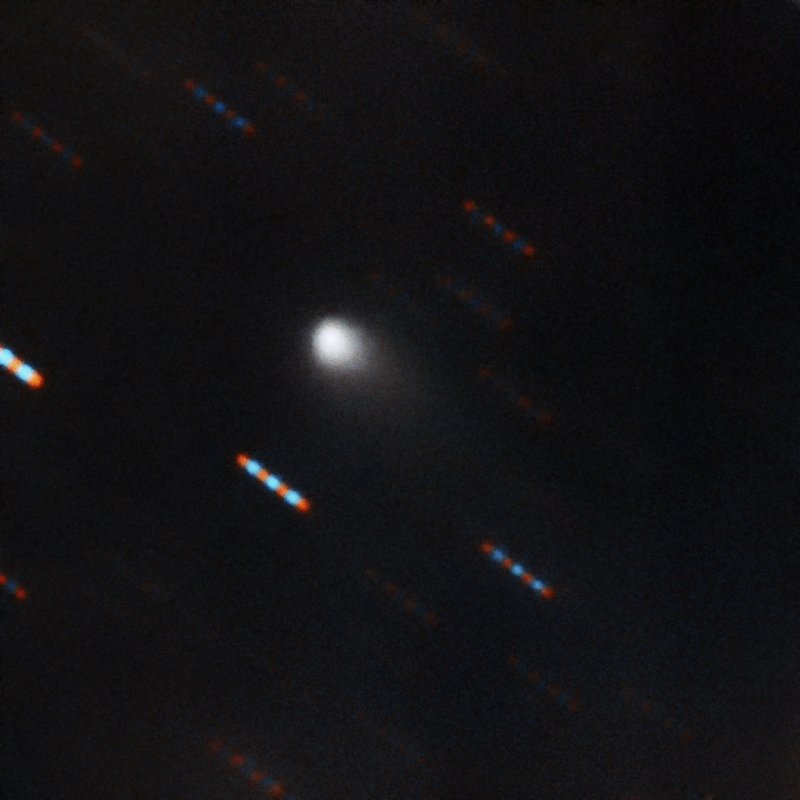That maybe-comet from another star really is a comet from another star, and now it has a name and a date with destiny. On Dec. 7, the newly named comet 2I/Borisov will make its closest approach to the sun and then begin a journey back outward through the southern sky in December and January.
This interstellar apparition announced itself in August, when Gennady Borisov, a Crimean astronomer and veteran comet hunter, noticed a furry dot of light cruising through the stars of Cancer on a peculiar path. Astronomers around the world fell over themselves trying to find out where it came from and where it was going.
Was it another 'Oumuamua, the cigar-shaped rock — later determined to be the first-known interstellar comet — that streaked through the solar system in 2017? (A few scientists even proposed that 'Oumuamua was an alien probe, and radio astronomers aimed their antennas at it to listen in, but silence ruled.)
Borisov's object looked like a comet from the outset. Astronomers quickly upgraded its name from BG00234 to C/2019 Q4 (Borisov) as they watched, measured and tried to confirm that it had come from outside the solar system.
In late September, astronomers from the International Astronomical Union's Minor Planet Center, which tracks and names solar system objects, and the Jet Propulsion Laboratory, operated by Caltech for NASA, concluded that the comet had indeed come from beyond, and agreed on its orbit. They renamed it 2I/Borisov, the "I" standing for interstellar and the "2" indicating that it was the second such comet found, the first now officially known as 1I/'Oumuamua.
Unlike 'Oumuamua, which was discovered when it was already leaving the realm of our planets, Borisov was found while still on its way in. The latest calculations have it passing nearest the sun — about 180 million miles, which is also about as close as it will get to Earth — on Dec. 7. Then it returns outward.
It will be visible in the southern sky to astronomers, and perhaps even to civilians, for several months — "a Christmas comet," Michele Bannister, an astronomer at Queen's University Belfast and an expert on small bodies, has said.
The detecting and inspecting have already begun. Using telescopes on the island of La Palma in Spain's Canary Islands, a team of astronomers led by Alan Fitzsimmons of Queen's University Belfast detected cyanogen in the gaseous cloud around the comet. Cyanogen, a toxic gas, is common in comets. In 1910, when Earth passed through the tail of Halley's comet, a rumor spread that all of humanity would be poisoned. (A comet tail is too diluted to do any damage.)
The discovery by Fitzsimmons' team marked the first time that astronomers had detected gas emitted by an interstellar object. The most remarkable thing about the comet, they found, was how unremarkable it appears. "Overall, we find the gas, dust and nuclear properties for the first active Interstellar Object are similar to normal solar system comets," Fitzsimmons and his co-authors wrote in a paper submitted to Astrophysical Journal Letters.
That is to say, nature seems to work the same out there as it does here.
WANDERERS
Likewise, it seems, for the origin of these interstellar wanderers. Astronomers theorize that comets are fragments of ice left over when planets form in the chilly outer realms of planetary systems. Subsequent encounters with large planets like Jupiter can toss these cosmic icebergs willy-nilly toward their parent stars or even outward into interstellar space, as evidenced by the intrusions of the comets 'Oumuamua and Borisov.
However, none of the 4,000 or so known or suspected exoplanets orbit in the icy regions around their stars, where this process could happen. So Malena Rice, a graduate student at Yale, and her adviser, Gregory Laughlin, went looking for more. They found evidence for what they call "hidden planets" in the form of gaps in icy debris disks surrounding about 20 stars observed by the Atacama Large Millimeter Array radio telescope in Chile.
The gaps, they found, are consistent with having been carved by planets that orbit at least as far from their stars as Jupiter is from the sun and that have masses between Neptune's and Jupiter's. About half the young stars in the Milky Way galaxy could have such disks and gaps and be spewing comets outward, the researchers concluded in a paper to be published in Astrophysical Journal Letters. They wrote the paper in July, just before Borisov was discovered.
"The timing has been incredibly exciting," Rice said in an email. "Right as we proposed this idea, a new interstellar object that nicely fit our theory fell right into our laps!"
She added, "It's very likely that interstellar objects have been passing through the solar system regularly, and we just haven't had sensitive enough telescopes to see them."
If they are right, several of these gifts from the outer universe should become visible to astronomers every year once the Large Synoptic Survey Telescope in Chile, which will be able to survey the entire sky every three days, in essence making a movie of the universe, begins operation in 2022.
Style on 10/14/2019
